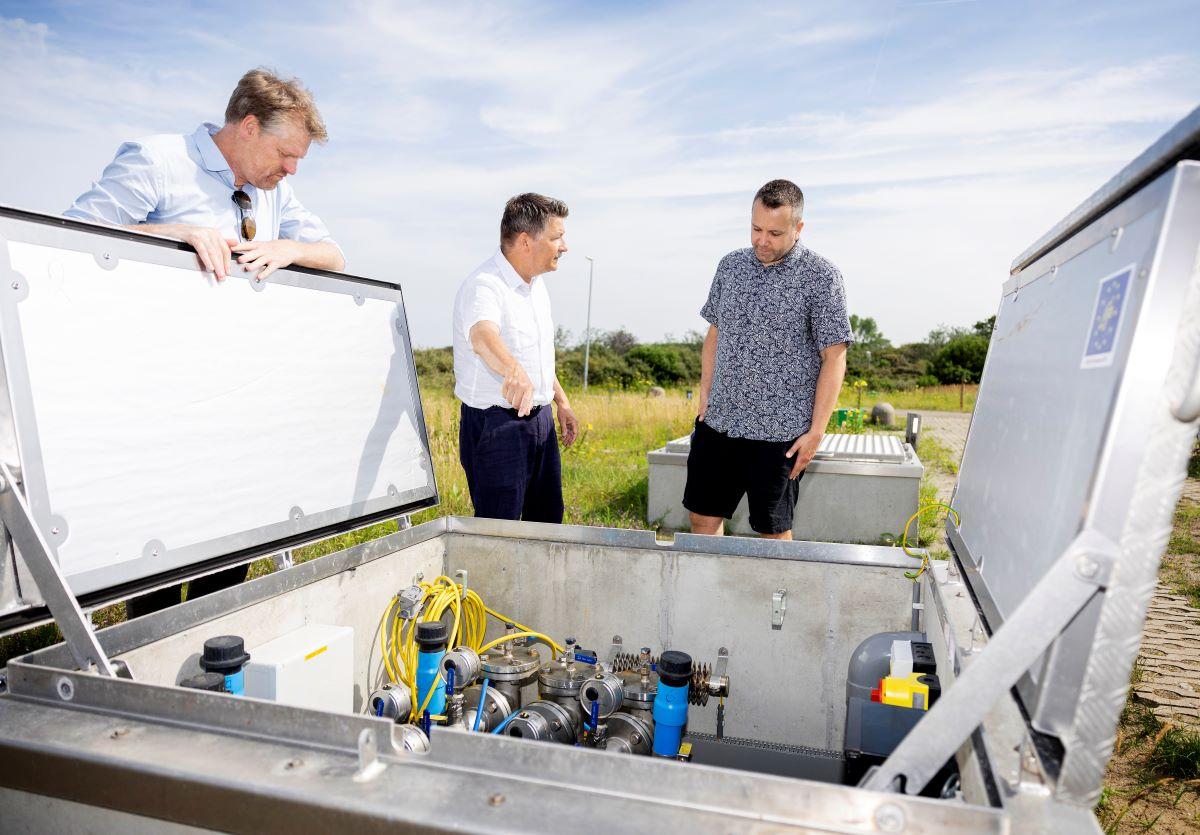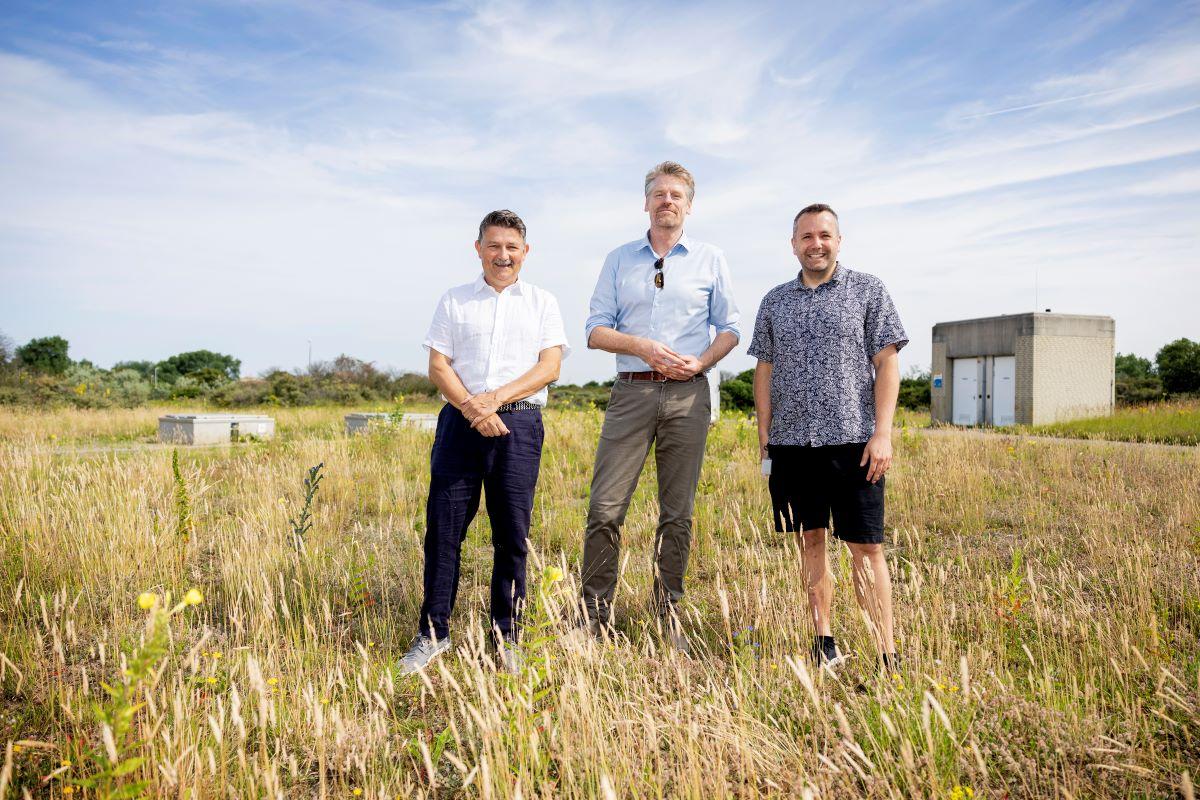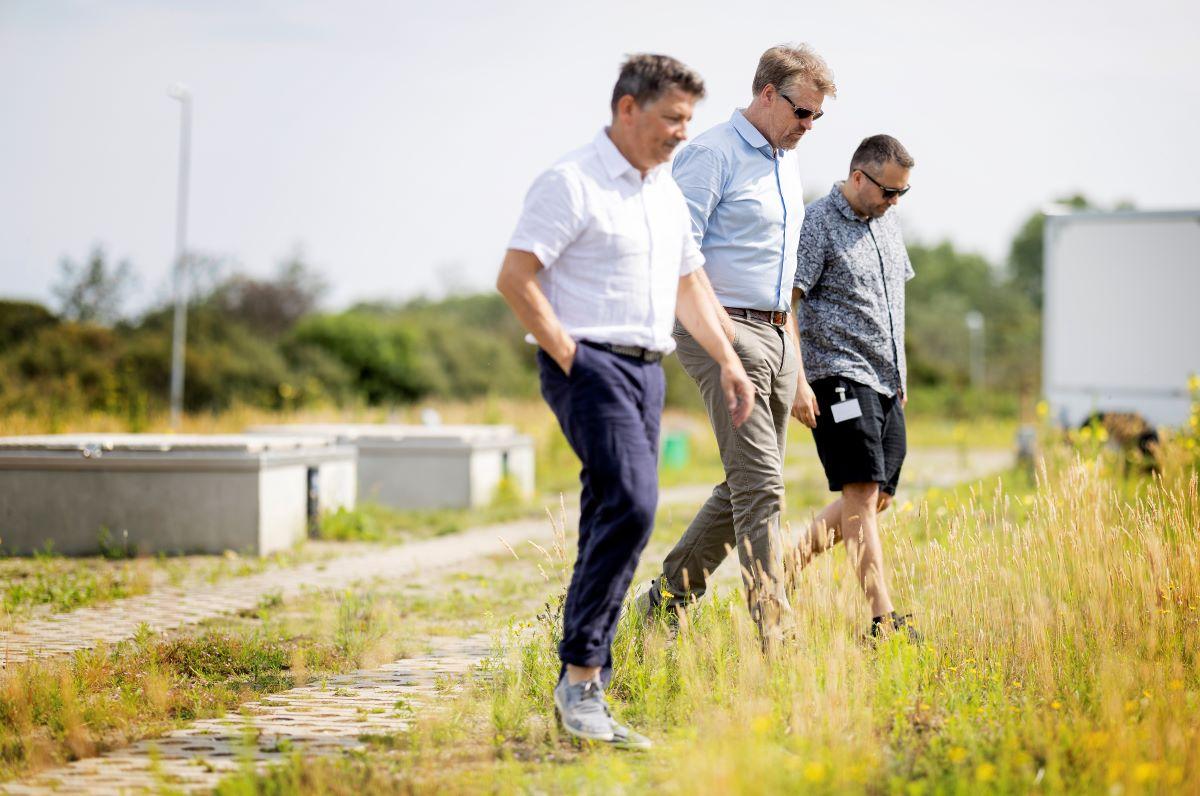Dunes, data, and desalination: navigating the future of freshwater
As the sea level rises and water demands increase, will we still have enough drinking water for our growing coastal population in twenty years from now? With the University of Utrecht, Deltares is working on increasingly accurate models of fresh and saline groundwater distribution in coastal regions to map out current and future resources of drinking water. These models are helping drinking water company Dunea to explore new sources of drinking water and adapt its freshwater extraction strategies.

“In order to supply enough drinking water in the future without harming nature, we need to know more about saltine, brackish and fresh groundwater,” says Gertjan Zwolsman, a source management consultant at drinking water company Dunea. He is at a brackish-water extraction well in the dunes of Scheveningen. Here, Dunea is working with Deltares and other knowledge partners such as KWR on assessing the effects of pumping up brackish groundwater, a potential future source of drinking water.
Population growth
Due to the growing Dutch population and the associated economic activity, Dunea’s annual drinking water production will have to increase from 85 million cubic metres now to about 95 million cubic metres in 2030 and over 100 million cubic metres in 2040, says Gertjan. “On the basis of projections from Statistics Netherlands, we expect 200,000 more people will to be living our area by 2040. Our current sources will not be adequate to supply the billions of extra litres that we will need. That’s why we are investigating additional sources.”

Saline seepage
Sea level rise is another threat to drinking water supplies in the coastal zone. Increasing pressure from the sea pushes saline groundwater towards fresh groundwater stocks, making that fresh groundwater saltier, explains Gualbert Oude Essink, an expert in groundwater management at Deltares. With his colleague Marc Bierkens and researcher Daniel Zamrsky of Utrecht University, he published the article Global Impact of Sea Level Rise on Coastal Fresh Groundwater Resources this year.
The aim was to look at the availability of fresh groundwater in low-lying coastal areas under future climate-change scenarios. The results show that sea level rise can lead to the severe reduction of fresh groundwater availability in a range of coastal areas worldwide. In the worst-case scenario, more than sixty million people could lose more than five percent of their freshwater resources by 2100.
Daniel: “Society at large is now starting to realise that drinking water availability could be a problem. Because you don’t see groundwater, until recent years, it hasn’t been an important item on the agenda.”
Freshwaterlens
Rivers are also an increasingly unreliable source of drinking water, Gualbert adds. “Dunea currently takes purified water from the Rhine and Meuse rivers for their production. But suppose Germany will use more river water in the future to combat more drier periods, or that we ourselves will distribute river water in the Netherlands differently: as a drinking water company, you depend on factors like these that you cannot control.”
Gertjan nods: “That’s why we also want to use the brackish water pilot project to look at how we can increase our freshwater stocks in the dunes.” He explains that the Scheveningen dunes are an infiltration location for Dunea, where pre-treated river water is infiltrated and pumped back up after six weeks before undergoing post-treatment so it can be used as drinking water. “We have to be very careful with this freshwaterlens because, if we extract too much, the groundwater gets salty. That is why we are also looking at whether extracting brackish groundwater will help us to use our deep freshwater supply for longer if river water can’t be taken to the dunes. For example, if that water is heavily polluted by a disaster. That enhances our capacity to get by during emergencies.”

Detailed data
The hydrogeological effects of extracting brackish groundwater are being measured under the direction of Deltares with innovative monitoring methods such as crosshole ERT, a geophysical technology that compiles three-dimensional images over time of the distribution of fresh, brackish and saline groundwater around the extraction well, and AH-DTS, a fiber-optic technique to measure in-situ groundwater flow velocities using heat transport characteristics. Gertjan: “These technologies are supplying us with very detailed data about groundwater movement and salinisation that we wouldn’t have been able to obtain in any other way. I’m very grateful to Deltares for that.” Gualbert stresses the importance of these measurements, which have never been done before in this integrated way, because “salt in groundwater is tricky in how it reacts to changes in the system. You need to keep in mind that one litre of salt can affect as much as 50 litres of fresh water, rendering it unusable.”
One of the things to emerge from the pilot project was that Dunea can pump up brackish groundwater and treat it for use as drinking water without significant problems. It has also been found that the size of the freshwaterlens in the dunes is indeed enlarged due to the extraction in a radius of at least forty metres around the extraction point. At present, the investigation has turned to whether the simultaneous extraction of shallow fresh and deep brackish groundwater will make it possible to use the deep freshwater stocks for a longer period of time in the event of an emergency without salinising the deep stocks.
The more data we have, the better we can make decisions and prepare for risks such as drinking water scarcity.
Daniel Zamrsky, University of Utrecht
Crucial models
The information from this pilot project is valuable because Gualbert and his Deltares colleagues can use it to validate and improve existing groundwater models. “Groundwater and salt transport models play a crucial role in the evaluation of potential threats and solutions to supply deltas with sufficient freshwater,” says Daniel. “The more data we have, the better we can make decisions and prepare for risks such as drinking water scarcity.”
It’s nice to work from the Netherlands, thinks model buff Daniel, because there is so much information. “The Netherlands leads the way in collecting data about the subsurface: they have been mapping out this area since the 1970s. This is a small country. That helps, too.” Researchers like Daniel obtain information about the saline and fresh groundwater distribution from instrumentaria like the NHI, a collection of software and data from Dutch water managers and knowledge institutes that serves as the basis for national and regional groundwater and surface water models. Year by year and step by step, the models are refined by feeding them with, for example, better geological data.
“At Utrecht University, we want to collect as much data as possible. Knowledge institutes like Deltares use those data to make increasingly accurate models. I enjoy making large datasets and designing tools so you can build large models in a short period of time,” says Daniel. “I usually work on models for large areas at a scale of tens of thousands of kilometres. With new measurement methods and data from the field, you can increase the resolution to zoom in on specific locations.”

Faster refinement
“With Artificial Intelligence and Large Language Models, Daniel’s models can be improved even faster,” observes Gualbert. “And also with airborne technologies which uses helicopters or aircrafts to acquire information from the air about the groundwater salinity and the subsurface using electromagnetic signals. And that’s cheaper and faster too! At the moment, we have to go into the field to make separate manual measurements for all locations.” Daniel laughs: “He won’t stop talking about this. I think we need to validate data from AI with measurements in the field. But we enjoy working together. I prefer to play alone in my sandbox, so to speak, and Gu is always challenging me to play with others. So I make friends and discover other measurement methods and new data.”
Sharing knowledge
What Daniel does is very important, Gualbert believes. “Other countries and knowledge partners can add their data to his models so that scenarios of fresh groundwater availability can be made for their situation. That is urgently needed: more than one third of the world’s population live on coasts and so their freshwater supplies are under threat. In the Netherlands, we can work with the best technology and train water managers in responsible management. We have an obligation to share that knowledge with other deltas. And quickly, too, because some two million people are dying per year of diarrhoea due to a lack of healthy and fresh drinking water. That causes more fatalities than flooding. I can’t wait to provide water managers with the right information and help them in that way.”
Daniel adds that other countries have little or no information about groundwater. “Some countries don’t even know how much drinking water resources they have in their subsurface. Spain, for example, is facing a huge challenge and it needs to invest in groundwater research. They probably have the data but they need to link it up to the most widely used international models and invest in salinisation measurements. Many other places in the world are facing bottlenecks like this as well.”

Impact
All three praise the collaboration. Daniel says it is a success story. Gertjan: “Certainly. As Dunea, we obtain very detailed information and knowledge about groundwater movements in our pilot area, and Deltares got the opportunity to test new monitoring and modelling technologies.” Gualbert agrees, because "we had never tested these techniques together on groundwater salinity in the field.” Because salinisation is a slow process, Gualbert says it is important to monitor the grounwdater system over much longer periods.
The partners need each other here as well, says Gertjan. “An important question for Dunea is the impact of scaling up: what effect does a field of wells in the dunes have on nature? Orchids grow in the wetlands here; the large-scale extraction of brackish groundwater could affect them. As Dunea, our mission is to balance the protection of nature with the production of enough drinking water, now and in the future.”
Because the brackish water pilot project was partly funded by the European Union, the alliance partners will share the data from it with other European countries. But that also applies to the working approach, adds Gertjan. “How can we optimise and apply what we have done here in Spain, for example?” Daniel: “Many countries don’t share their data about freshwater stocks. But as the effects of climate change and groundwater overexploitation become increasingly apparent in more and more areas, doors are opening for more knowledge sharing.”


